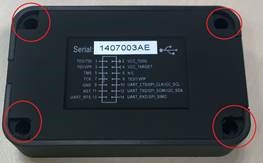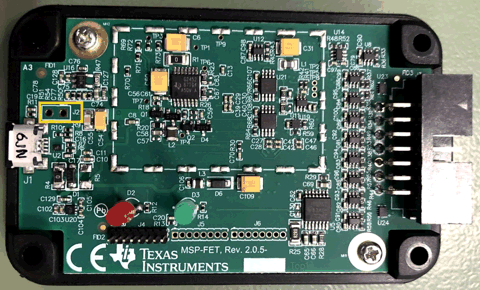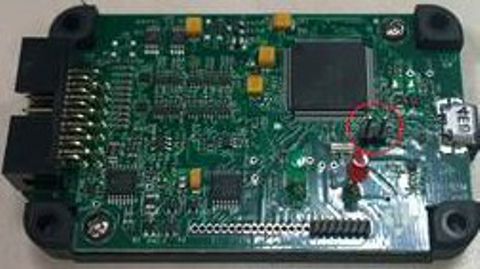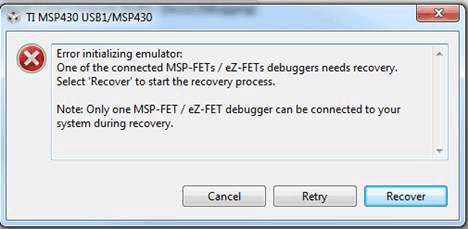SLAU647O July 2015 – April 2020
-
MSP Debuggers
- Trademarks
- 1 Introduction
- 2 MSP Debug Probe Overview
- 3
Hardware Identification
- 3.1 How to Determine If Your Hardware is Based on eZ-FET or eZ-FET Lite
- 3.2 How to Determine If Your Hardware is Based on eZ430
- 3.3 Signal Connections for In-System Programming and Debugging
- 3.4 Using the Power Supply Feature of the eZ-FET and eZ-FET Lite
- 3.5 Using the Power Supply Feature of the MSP-FET430UIF and MSP-FET
- 4 Hardware Installation
- 5
Debug Probes Hardware and Software
- 5.1 MSPDebugStack
- 5.2 Ultra-Low-Power (ULP) Debug Support
- 5.3 EnergyTrace™ Technology
- 5.4 Unlimited Software Breakpoints in Flash, FRAM, and RAM
- 5.5 JTAG Access Protection (Fuse Blow)
- 5.6 MSP-FET Stand-Alone Debug Probe
- 5.7 MSP-FET430UIF Stand-Alone Debugger
- 5.8 eZ-FET and eZ-FET Lite Onboard Emulation
- 5.9 eZ430 Onboard Emulation
- 5.10 MSP-FET430PIF
- Revision History
5.6.5.3 MSP-FET HID Cold Boot
If the MSP-FET does not respond to software commands or firmware updates, a cold boot is the last option to bring it back to operation. A cold boot is performed by connecting VBUS to the PUR signal of the MSP-FET host device (MSP430F6638) with a serial resistor.
To execute this procedure, the MSP-FET cover must be opened by unscrewing the four screws on its back (see Figure 15). Make sure that the USB cable is disconnected from the computer.
 Figure 15. Open MSP-FET Cover
Figure 15. Open MSP-FET Cover Next connect a cable or jumper to J2 for MSP-FET starting from version 2.0 (or J5 for older versions) (see Figure 16 and Figure 17).
 Figure 16. MSP-FET Rev 2.0 Jumper J2
Figure 16. MSP-FET Rev 2.0 Jumper J2  Figure 17. MSP-FET Rev 1.2 Jumper J5
Figure 17. MSP-FET Rev 1.2 Jumper J5 Plug in the USB cable while the jumper is on J2 (or J5). After boot, remove the jumper from J2 (or J5). The MSP-FET is recognized by the device manager of the OS as an HID-compliant device. The green LED should be on.
Start the IDE while the MSP-FET is in recovery (HID) mode. When prompted (see Figure 18), confirm the request to recover the firmware and all following firmware update requests.
 Figure 18. Recovery Confirmation
Figure 18. Recovery Confirmation